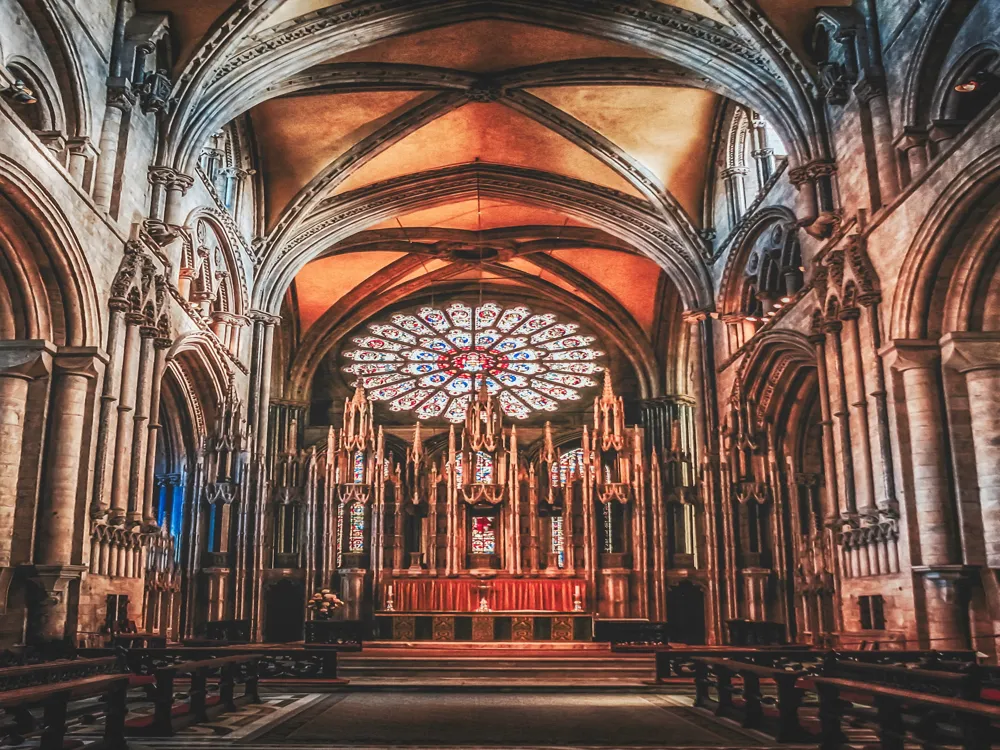Nestled in the serene hills of Nagaland, Touphema Village stands as a testament to the rich cultural heritage and ancient traditions of the Naga people. Located about 41 kilometers from the state capital, Kohima, Touphema is not just a village but a doorway to the past, offering visitors a glimpse into the lifestyle of the indigenous tribes of Nagaland. This picturesque village, managed by the local community, showcases the unique way of life of the Angami tribe, one of the major tribes in Nagaland. The village's history dates back centuries and is steeped in folklore and tradition. The people of Touphema have maintained their customs and practices, which are deeply rooted in their daily lives. Visitors to Touphema are welcomed with warm Naga hospitality and are often invited to partake in the local cuisine, which is an experience in itself. The cuisine is a delightful mix of traditional flavors, with an emphasis on smoked and fermented foods. What makes Touphema Village truly special is its commitment to preserving the heritage and culture of the Naga people. The village operates as a living museum, where visitors can observe and participate in the daily activities of the villagers. This includes traditional weaving, basket making, and the preparation of local delicacies. The villagers also organize cultural performances, showcasing traditional Naga dances and music, which are a must-see for any visitor. The architecture of Touphema is also noteworthy. The village is dotted with traditional Naga huts, built using indigenous techniques passed down through generations. These huts are constructed primarily from bamboo and wood, with thatched roofs, and are designed to withstand the harsh mountain climate. The village layout is reminiscent of ancient Naga settlements, offering an authentic experience of traditional Naga life. Touphema Village is not just a tourist destination; it's an educational journey into the heart of Naga culture. It’s a place where one can disconnect from the modern world and connect with nature and tradition. Whether it's through the vibrant cultural performances, the unique architecture, or the simple joy of interacting with the locals, a visit to Touphema Village is a deeply enriching experience. The architecture of Touphema Village is a remarkable representation of the cultural identity and traditional practices of the Naga people. The structures within the village are designed to reflect the lifestyle and the environmental adaptations of the Angami tribe. At the core of this architecture is the use of locally sourced materials, primarily bamboo, wood, and thatch, which not only makes the structures sustainable but also integrates them seamlessly with the natural surroundings. A distinctive feature of the Naga architecture, as seen in Touphema, is the Morung, or the bachelor's dormitory. This structure plays a critical role in the social and cultural life of the village. It serves as a communal space for young men and is a center for learning about the tribe's folklore, crafts, and warfare techniques. The Morung is often elaborately decorated with symbols and motifs that are significant to the tribe’s history and beliefs. The traditional Naga huts in Touphema are an architectural marvel in themselves. They are built on stilts, a common feature in Naga architecture, which serves multiple purposes. This elevated design protects the inhabitants from wild animals and also provides a storage space underneath the house. The roofs are steeply pitched, made from thatched materials, which helps in draining rainwater quickly, a necessary feature in the rain-soaked region of Nagaland. Inside a typical Naga hut, the space is efficiently utilized, with a hearth at the center serving as the focal point of family life. The walls are adorned with artifacts, including traditional weapons, baskets, and utensils, each telling a story of the tribe’s way of life. The huts are not just living spaces; they are a canvas that displays the art, culture, and history of the Naga people. The village layout is also a reflection of the community-centric lifestyle of the Naga tribes. The houses are arranged in a way that fosters community living, with open spaces for communal activities and celebrations. This layout symbolizes the strong sense of community and belonging that is intrinsic to the Naga culture. Touphema Village’s architecture is not just about buildings and structures; it's about preserving a way of life. Every aspect of the architecture, from the materials used to the design elements, is imbued with cultural significance. A visit to Touphema offers an insightful view into this unique architectural style, allowing one to appreciate the ingenuity and resourcefulness of the Naga people. It’s important to show respect for the local customs and traditions when visiting Touphema Village. The Naga people take great pride in their heritage, and visitors are expected to be mindful of this. Dress modestly, ask for permission before taking photographs, and show courtesy when interacting with the locals. A visit to Touphema is not complete without trying the local cuisine. Naga food is known for its unique flavors, with a focus on smoked, fermented, and bamboo-steamed dishes. Be adventurous and try the local specialties, but be aware that some dishes can be quite spicy. Engage with the local culture by participating in the village’s cultural activities. This could include traditional dance and music performances, weaving demonstrations, or storytelling sessions. These activities offer a deeper understanding and appreciation of Naga culture. The best time to visit Touphema Village is from October to May, when the weather is pleasant. Make sure to check the local weather and plan your travel accordingly. Also, be aware that the village is in a remote area, and some basic amenities might not be readily available. For a complete experience, consider staying in one of the traditional huts in the village. This provides an authentic taste of Naga lifestyle and supports the local community. The huts are comfortable and offer basic amenities, but do not expect luxury accommodations. Touphema Village is accessible from Kohima, the capital city of Nagaland. The nearest airport is in Dimapur, from where one can hire a taxi or take a bus to Kohima. From Kohima, Touphema is about a 1.5-hour drive. The journey to the village is an experience in itself, with scenic views of the Naga hills and lush landscapes. Hiring a local taxi from Kohima is the most convenient way to reach Touphema, as it allows for flexibility and the opportunity to stop at viewpoints along the way. For those preferring public transportation, there are buses and shared taxis available from Kohima to the village. However, these might not be as frequent, and it's advisable to check the schedule in advance. Regardless of the mode of transportation, the journey to Touphema Village is an integral part of the experience, offering a chance to witness the breathtaking beauty of Nagaland’s countryside. Read MoreOverview of Touphema Village in Kohima, Nagaland
Architecture of Touphema Village
Tips When Visiting Touphema Village
Respect Local Customs and Traditions
Try Local Cuisine
Participate in Cultural Activities
Plan Your Travel Accordingly
Stay in Traditional Huts
How to Reach Touphema Village
Kohima Tourism
Best Time to Visit Kohima
How to Reach Kohima
Things To Do Kohima
Touphema Village
Kohima
Nagaland
NaN onwards
View kohima Packages
Weather :
Label : Must Visit
Tags : Village
Timings : Day time
Entry Fee : The cost of the suite you are staying in.
Planning a Trip? Ask Your Question
Kohima Travel Packages
View All Packages For Kohima
Top Hotel Collections for Kohima

Private Pool

Luxury Hotels

5-Star Hotels

Pet Friendly
Top Hotels Near Kohima
Other Top Ranking Places In Kohima
View All Places To Visit In kohima
View kohima Packages
Weather :
Label : Must Visit
Tags : Village
Timings : Day time
Entry Fee : The cost of the suite you are staying in.
Planning a Trip? Ask Your Question
Kohima Travel Packages
View All Packages For Kohima
Top Hotel Collections for Kohima

Private Pool

Luxury Hotels

5-Star Hotels

Pet Friendly





















